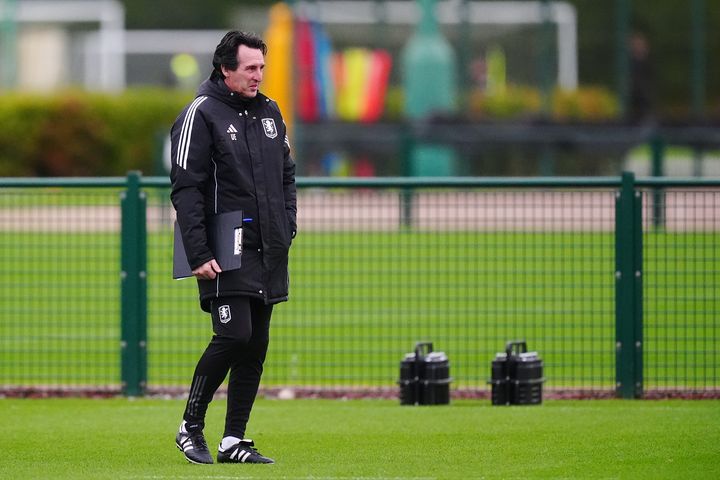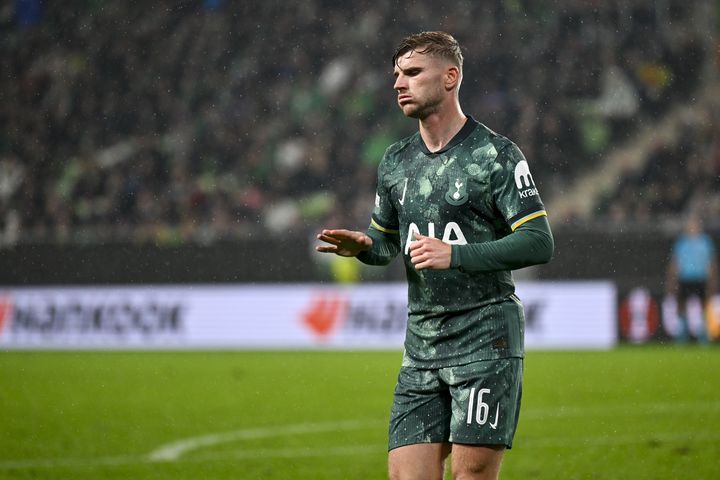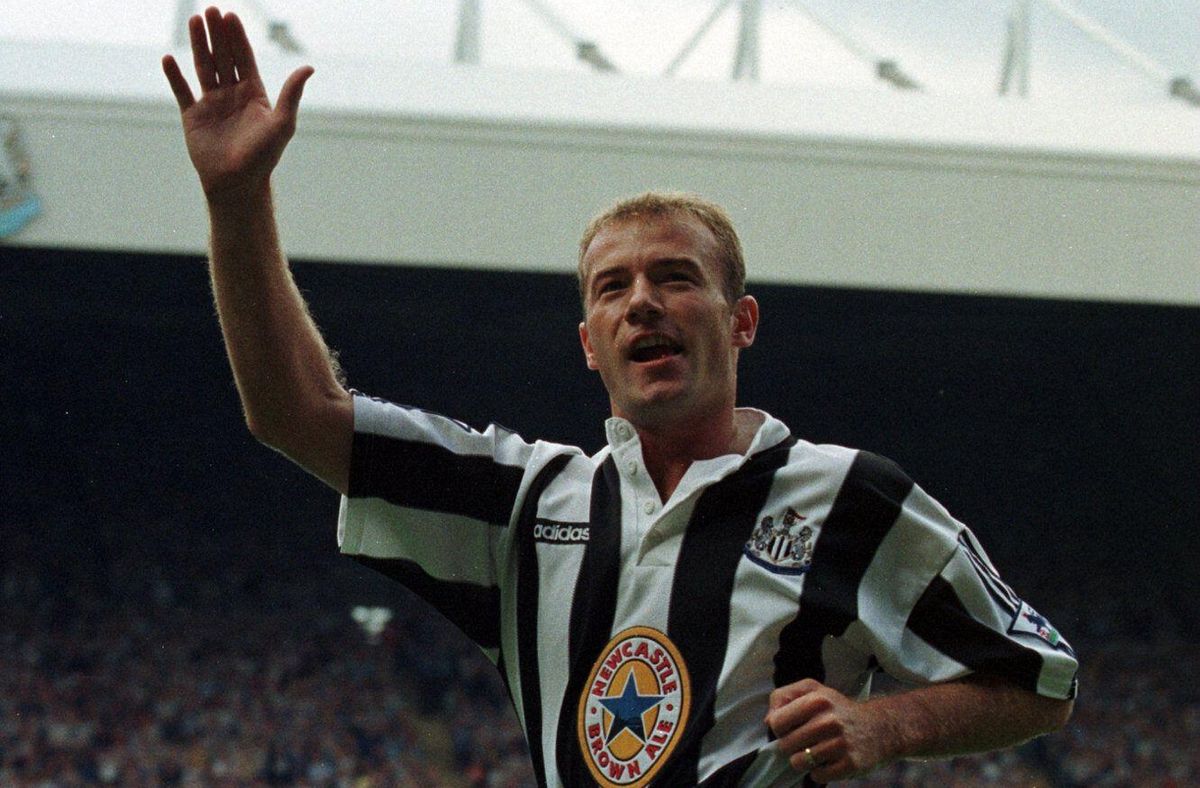
The Denver Broncos last season lost their first two games and traveled to Florida seeking a turnaround. They left embarrassed, suffering a historic 70-20 loss to the Miami Dolphins , a lowlight in a 1-5 start that proved too damaging to overcome. The Broncos are 0-2 once again and are headed back to Florida — this time to face the surging Tampa Bay Buccaneers — and hoping they can begin this year’s turnaround before the calendar hits October.
After playing the Buccaneers, the Broncos will stay on the East Coast and practice in West Virginia before traveling to face the New York Jets in Week 4. Advertisement “It’s not a make or break, but we’re going to have a better idea of where this team is going to be after these next two weeks,” Broncos coach Sean Payton said. “Sometimes that can work as a positive relative to your team (being) together the whole time.

There are still no ways around it. We have to look right into the teeth of this and get better quickly.” Payton likes to say teams are in a race to improve through the first four weeks of a season, and the Broncos once again have catching up to do at the midway point of that early stretch.
With the help of some great questions from our subscribers at The Athletic , let’s dive into some of the issues surrounding the team: Rookie quarterbacks Bo Nix and Caleb Williams are both off to rough starts. Texans quarterback CJ Stroud told Williams after the Bears’ loss Sunday not to sweat his early struggles and that the skillset that got him to the NFL will inevitably bring him success. If Williams is struggling behind a better offensive line and with much better wide receivers, are we overreacting with Nix? — Ben P.
Rookie starting quarterbacks on average tend to finish their first seasons ranked somewhere around 25th or lower in EPA (expected points added) per dropback. In 2021, Trevor Lawerence (28th), Zach Wilson (31st) and Justin Fields (29th), the first three quarterbacks taken in that year’s draft, all finished among the bottom five quarterbacks in the NFL measured by EPA per dropback while Mac Jones , the fourth quarterback taken, was 16th. Stroud was seventh in the category last year, the best standing since Justin Herbert in 2020, but Will Levis and Bryce Young finished in the bottom third of the league.
Nix and Williams rank 30th and 31st, respectively, in EPA per dropback through two games. Only Young, already benched by the Panthers , has been worse. It’s far from unprecedented for Nix and Williams to be slotted where they are at this early stage.
The sample size alone is a reason not to overreact. Rare is the rookie quarterback who looks like Stroud at the start of his NFL career. GO DEEPER Broncos offense has regressed since releasing Russell Wilson.
Can Sean Payton fix it? Still, the nature of Nix’s struggles is concerning. Early this week I watched all 88 of Nix’s dropbacks. The batch is devoid of good stuff.
In two-minute situations, when Nix has been at his most relaxed, he’s shown an ability to get into rhythm as a passer. On Denver’s penultimate drive against the Pittsburgh Steelers , he hung in under pressure to find Lil’Jordan Humphrey in the middle of the field. The defensive back had inside leverage on Humphrey, so Nix delivered the ball to the receiver’s outside shoulder, giving him space to turn upfield and gain 27 yards, one of Denver’s biggest after-the-catch runs this season (more on that in a minute).
Advertisement Other times, Nix has time and still allows his mechanics to get out of whack. His brutal interception in the end zone in the third quarter Sunday was a rushed throw made off his back foot. On the opening play of the fourth quarter near midfield, Nix missed a wide-open Courtland Sutton over the middle, the ball fluttering before hitting the ground in front of the wide receiver.
Those are the plays that are head-scratchers. They were the unforced errors he avoided the past two years at Oregon and during the preseason. THE STEELERS PICK OFF BO NIX IN THE END ZONE!! 😎 (via @steelers ) pic.
twitter.com/nlJFboNU7v — FOX Sports: NFL (@NFLonFOX) September 15, 2024 Still, the miscues seem correctable for Nix, who has dealt with his fair share of heat in the pocket. The rookie has been pressured on 36.
4 percent of his dropbacks this season, according to Next Gen Stats, the eighth-highest rate in the league. The Broncos should shore up their protection, even with right tackle Mike McGlinchey missing time , beginning with a Buccaneers team that hasn’t done much to bother quarterbacks early this season despite a 2-0 start. And Nix should get more accustomed to the speed coming at him.
But if he’s still making the same unforced errors in another month, the cause for concern will be real. What is the team’s plan to stretch the field? I don’t think I’ve seen two safeties deep on the Broncos all year, outside of garbage time. With eight or nine guys in the box for three-plus quarters, I can’t tell if our running game is terrible or a product of a lack of space when there’s no fear of anything outside of a run, screen pass or quick out.
— Max S. The Broncos have faced two high safeties on 34.4 percent of offensive plays, according to TruMedia, which is right around the league average.
But to your point, Max, opponents have often had one of those safeties, while still technically in “high” position, cheating or leaning toward the line of scrimmage. And the Broncos are facing eight-man boxes on 27.3 percent of their run plays, the sixth-highest rate in the league.
Free, daily NFL updates direct to your inbox. document.querySelectorAll(".
in-content-module[data-module-id='scoop-city-newsletter'] .in-content-module-img img ").forEach((el) => { el.
setAttribute("style", "pointer-events: none;");}) Free, daily NFL updates direct to your inbox. The Broncos don’t have to connect on a bunch of deep go-balls to push some of those defenders out of the box, but they will have to find more success in the intermediate passing game. They need to connect on routes 7 to 15 yards beyond the line of scrimmage that force the linebackers — and the aforementioned cheating safeties — to not line up with one foot already pointed toward the backfield.
Some of those throws have already been there. Nix has missed Sutton on a handful of crossing routes that would have gone for first downs and potentially changed the complexion of those drives. The Broncos could also use more speed on the field.
Which brings us to one of the more popular questions in the mailbag this week ...
Why is wide receiver Marvin Mims Jr. nonexistent? It seems concerning that the guy they traded up for is getting consistently out-targeted by Lil’Jordan Humphrey, the very definition of a replacement-level player. — Jesse M.
Nine snaps for Mims? And over 40 for Lil’Jordan, up from the practice squad? What kind of flagrant foul did this kid commit to land in Sean’s doghouse? And is Humphrey really the third-best target on this team for our rookie QB? — Don K. The nine snaps Mims played against the Steelers were the fewest in a game during his career. That came after his 12 snaps against the Seahawks tied his previous career-low total.
After Week 1, Payton said Mims’ snap total would increase “depending on the team we’re playing,” and in what the Broncos knew would be a low-scoring affair, there weren’t as many tagged plays for Mims in the game plan. It’s difficult to envision Mims being a significant deep threat when the Broncos prioritize the quick-hit passing game while getting Nix comfortable. Routes downfield need time to develop, and Nix isn’t spending much time with the ball before looking to dump it short.
He isn’t moving past his first read often. Still, it’s surprising the Broncos haven’t found a way to utilize Mims’ speed, which remains apparent when he is returning kicks. Teams aren’t going to react to his motion when the Broncos aren’t finding him on the edges.
Humphrey has always been a part of Payton’s game plan. Remember, he played the third-most snaps of Denver’s wide receivers last year, too. The Broncos trust what he can do in the run game and as a physical receiver who makes contested catches.
Those things fit more consistently into the way the offense is being run right now. Or at least how it’s being designed to run, since saying the offense is being “ran” at all right now would be overly charitable. Advertisement The bottom line is that until the playbook expands, I’m not sure Mims’ role will grow.
Why can’t the Broncos make anyone miss? The receivers can’t turn an 8-yard pass into a 9-yard gain, so forget about breaking one open for an extra 20 yards. The running backs go down on first contact. Is it a talent issue? Team speed? Toughness? — William N.
The lack of yards after the catch has indeed been a major issue for the Broncos through two games. Payton likes to say it’s a catch-and-run league, but Denver is averaging only 4.2 yards after the catch per reception, according to TruMedia, a figure that ranks 27th in the NFL.
The catch part of the equation isn’t exactly humming either. The Broncos have dropped five passes through two games; only three teams have dropped more throws. There are multiple issues at play.
For starters, there have been a lot of short stick and curl routes thrown by Nix in the season’s first two games. It’s hard to get a head of steam when you turn your back to the defense to make a catch and then have multiple defenders crashing down on you as soon as the ball is in your hands. Many routes the Broncos are running don’t have a great chance to produce yards after the catch.
GO DEEPER NFL Power Rankings Week 3: Cowboys, Ravens in trouble? Are Saints, Vikings for real? Conversely, the Broncos are averaging 3.4 yards of separation per target, according to Next Gen Stats, a figure that measures how far away the nearest defender is when a receiver has a ball is thrown his way. That figure ranks 17th in the NFL, so it’s not as if there are no chances to make plays after the catch.
In my view, the Broncos do lack team speed, which is partly a product of trading away a combined six first- and second-round picks across three seasons to acquire Russell Wilson and Payton. But there is also an accuracy component at play. Nix’s completion rate of 59.
7 percent is 8.8 percent below expected, according to Next Gen Stats, which ranks ninth-worst among NFL starters. In other words, there have been several times when receivers have run routes that have put them in position to gain decent yards after the catch, only to have the passes thrown in a way that forces them to adjust their routes or miss them completely.
As is the case for much of Denver’s offense during these early season struggles, there are multiple issues contributing to the yards-after-catch problem. The run-game failure is glaring. Is it misspent money on the O-line? Lack of a coherent game plan? Poor running backs? Some combination of all of the above? This team is going nowhere until there’s a solid run game.
— Laurie R. This was another popular topic in the mailbag, for good reason. I tackled a lot of this question in a piece Tuesday, explaining that while Javonte Williams has been one of the league’s most inefficient ball-carriers through two games, the problems go deeper than just him and the other running backs.
I mentioned above that the lack of an intermediate passing game is giving defenders free rein to crowd the box. Williams has faced eight or more defenders near the line scrimmage on 11 of his 19 carries this season (57.9) percent.
That’s difficult math to combat. GO DEEPER Javonte Williams' lackluster play only part of rough start for Broncos' run game I also think the Broncos have to be more committed to it. They had seven rushes against 13 dropbacks in the first half of a game Sunday that was within one score every time Denver had the ball.
The Steelers are insulating a quarterback with clear deficiencies by forcing their hand with the run game. It hasn’t been pretty — like Denver, Pittsburgh has scored only one touchdown this season — but it has created an unmistakable identity for the Steelers. Play stout defense, limit mistakes and stick to the run.
The Broncos are a team still searching for their identity. (Top photo: Ron Chenoy / Imagn Images).














